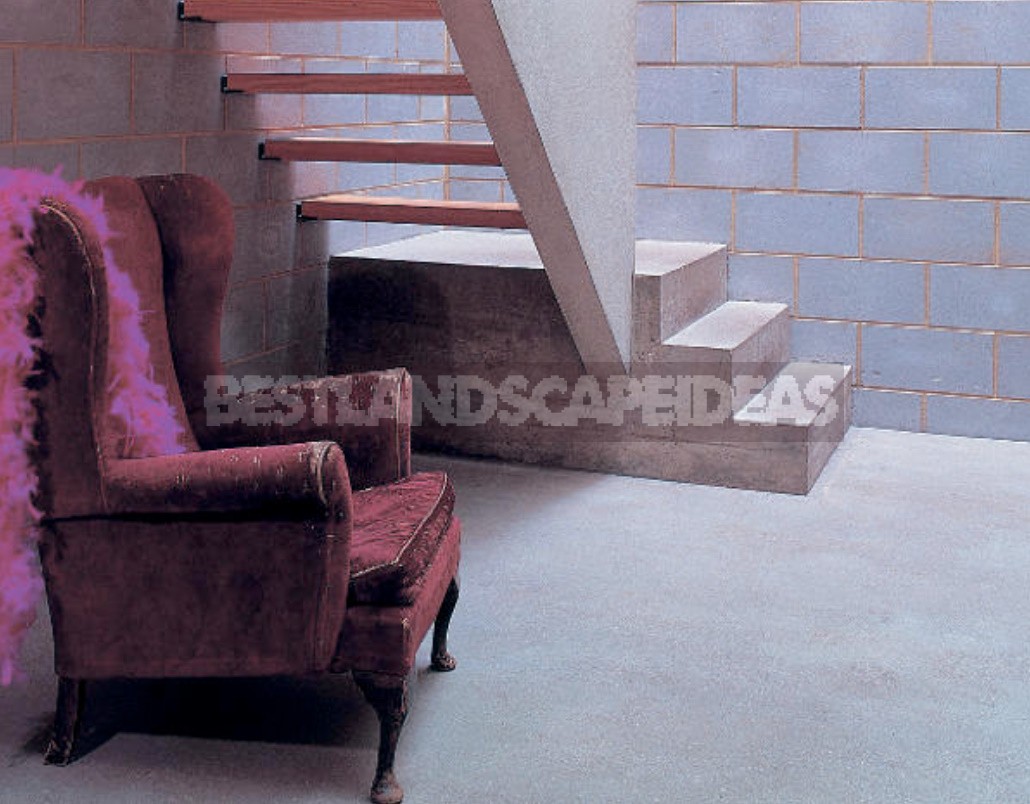
The monolithic floor of the first floor is a concrete slab lying on a sketch of a large crushed stone. This is a common construction of the first floor ceiling in modern houses, which is sometimes found in old buildings. For the device of such a floor, the top layer of soil is first removed, then a stone sketch is made to strengthen and level the soil base. A thin leveling layer of sand is applied to the rough relief of the outline, which is then rolled out smoothly. This sand prevents cement from leaking from the concrete into the outline, which would weaken the concrete.
Monolithic concrete floor
Usually a concrete slab has a thickness of 100-150 mm, and it is either laid on a moisture-proof material – a waterproofing gasket, or covered with such a material.
Such a gasket can serve as a thick polyethylene film or a more traditional means in the form of a liquid coating with bitumen or bitumen-containing material. But no matter how the gasket fits, it must be connected to the waterproofing layer in the walls.
Concrete foundation
A concrete foundation can be made in two ways. It can form a monolithic base on which the walls are placed. When a ribbon or slotted (trench) foundation is used, a concrete slab can be laid on the ground between the walls.
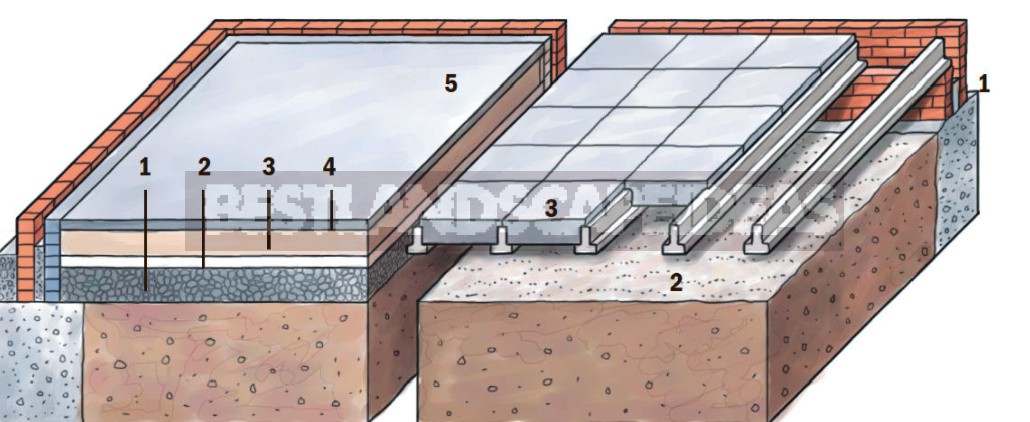
On the left is a monolithic concrete floor: 1 – outline, 2 – thermal insulation, 3 – concrete slab, 4 – waterproofing gasket, 5 – screed. On the right is a floor made of concrete blocks on beams: 1 – waterproofing gasket, 2 – reinforced concrete beams, 3 – concrete blocks
On this overlap, you should first lay a flat screed of sand and cement before making a floor covering. If the waterproofing gasket is located under the concrete slab, the screed can be made 44 mm thick, but if the waterproofing gasket covers the slab, then the screed thickness should be at least 63 mm.
A suspended concrete floor is a series of reinforced concrete beams laid on intermediate walls at the level of a waterproofing gasket, on which concrete blocks are laid in turn.
Concrete floors
Monolithic concrete floors are often preferred to wooden suspended floors because they are cheaper to manufacture. Such a floor can be made immediately after the foundation is ready and several rows of masonry are laid above the ground, or it can be assembled from concrete beams and blocks. It can also be part of a reinforced concrete foundation – its base (see the picture below).

Reinforced concrete foundation: 1 – single base, 2 – reinforced concrete slab
Laying of concrete floor
If the wooden floor is seriously damaged, it can be replaced with a monolithic concrete floor, provided that the space under it requires a filling height of no more than 600 mm. If the height is higher, you will have to make a new suspended floor, since the concrete floor may subsequently collapse as a result of backfill precipitation.
The alteration of one floor may affect the ventilation of another. Therefore, before acting, consult. Communications should be shifted before filling.
Preparation of the foundation
- Remove and burn all damaged wooden elements. Remove the door to the room.
- Carefully treat the soil and the surrounding masonry with a strong fungicide.
- Close all the cavities remaining after removing the wooden elements with bricks and mortar.
- With the help of a chalked cord, apply a line of the level of the future finished floor to the walls, taking into account the layer of finishing coating.
- Approximately 50 mm below this marking line, apply another one — the distance between them will mean the thickness of the screed.
- Then make a third line 100 mm lower, which will give the thickness of the plate. The fourth line below it will indicate thermal insulation.
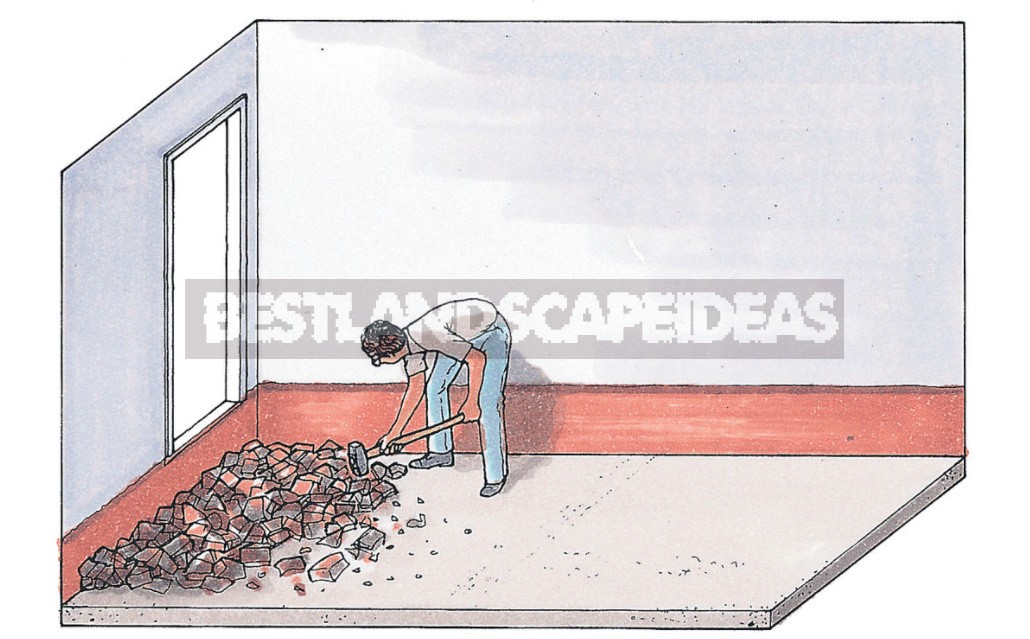
Preparation of the foundation. Mark the walls with chalk lines showing the level of the floor surface, the thickness of the screed and concrete slab, as well as thermal insulation. Make the backfill to a level not reaching the bottom line by 25 mm, ramming each layer well with a sledgehammer. Put a leveling layer of sand up to the marking line, and lay a waterproofing gasket on top of it
Backfilling
Lay the filler in layers no thicker than 20 cm, properly tamping each layer and breaking large pieces with a sledgehammer (see the picture above). As a backfill, you can use bricks and broken tiles, or even better – gravel. Remove pieces of wood and plastic from the backfill, which may react undesirably with cement.
Bring the filling surface to a level 25 mm below the thermal insulation line, then put a leveling layer of sand, tamping it evenly.
Spread a sheet of thick (0.2-0.3 mm) polyethylene film on the sand, wrapping its edges on the walls around the perimeter. In the corners, carefully fold the film and temporarily fasten it with paper clips. If one sheet is not enough to cover the entire area, then put a film with an overlap of at least 200 mm, and seal the joints with waterproof tape.
Floor insulation
The degree of necessary thermal insulation of the floor depends on its area and design. Consult the construction supervision authority or a construction and architectural company.
Laying of thermal insulation
Tightly join the polystyrene plates, placing them on a waterproofing gasket, and tape the joints with tape. During the work, lay strips of insulating material between the walls and concrete to eliminate the penetration of cold bypassing the insulation.


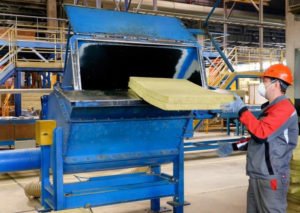
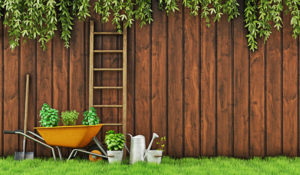
Leave a Reply